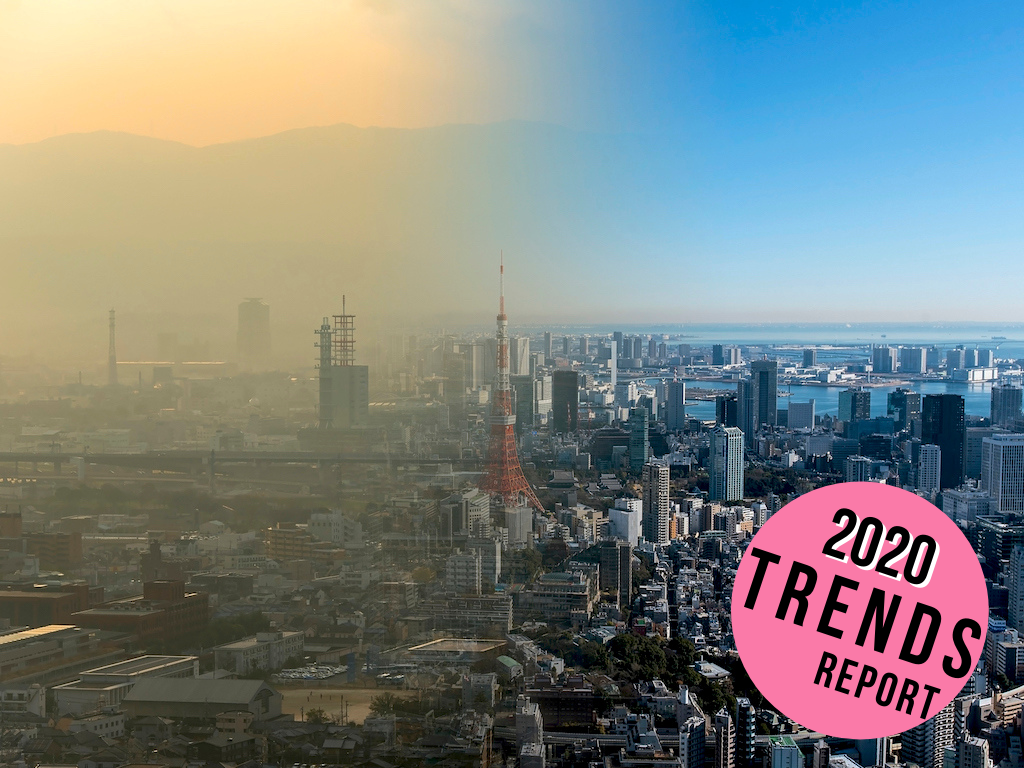3 Mins Read
In 2020, the world will go on a quest for cleaner air because we’re so much more aware about the health impact of air pollution. The past few decades of industrialisation have resulted in smog and haze become the norm in many cities across the globe, as we have collectively spewed out pollutants in the atmosphere at an astonishing rate, many of us are breathing in harmful toxins with detrimental and potentially long-lasting consequences.
We saw new research evidencing a link between air pollution nanoparticles and brain cancer, and another study finding that maternal exposure to air pollution in China has been associated with missed or “silent” miscarriages. According to the WHO, 7 million people die from breathing in harmful smoke, gases and soot, and 3 million of these can be attributed to toxic air in China and India alone.
While civil society groups, nonprofit organisations and scientists continue to urge governments to crackdown on the pollution crisis which has especially plagued Asian cities from Beijing to Hong Kong, New Delhi, Singapore and Sydney, people’s concerns across the board will drive us towards looking for solutions for healthier, cleaner, fresh air. And we’re not talking about the lucrative “bottled air” industry that took hold a couple years back, but instead newer, wellness-centred offerings.
Already, we’ve seen phone apps created to help users search for less polluted travel routes and forecast pollution levels in the next couple of days, such as PRAISE-HK, developed by Hong Kong’s University of Science & Technology (HKUST), which uses predictive modelling and censor data to provide real-time and 48-hour estimates of air pollution.
Consumers are also taking it into their own hands by purchasing air purifiers, which will no doubt drive the market to significant growth over 2020. As the prevalence of respiratory diseases continues to rise, carbon dioxide emissions escalate and extreme climate change exacerbated events like toxic haze from wildfires showing no end, people will flock to air purifiers as a precautionary measure for their health.
Beyond the purifier market, we’ll see a surge in popularity of “eco-ifying” indoor spaces and homes with pollution fighting plants as a natural means to clean up our air. Going hand in hand with the recent millennial obsession with houseplants as a product of their affinity for health and wellness, indoor succulents, fiddle leaf figs and variegated monsteras will make their way into more homes this year.
We’re also predicting that clean air tourism will take off. Cities with clean air will become not only the most desirable in terms of living and working, but travelling too. In previous years where smog has plagued Chinese cities, haze-avoidance tourism became popular in China in the winter months to escape air pollution. This will likely become a trend outside of China as the air pollution crisis continues to blanket major cities all over the world, from New Delhi to Hong Kong, Sydney and Singapore, where the search for fresh air will undoubtedly become a core part of holidaymakers’ calculations.
Lead image courtesy of iStock Photos.




